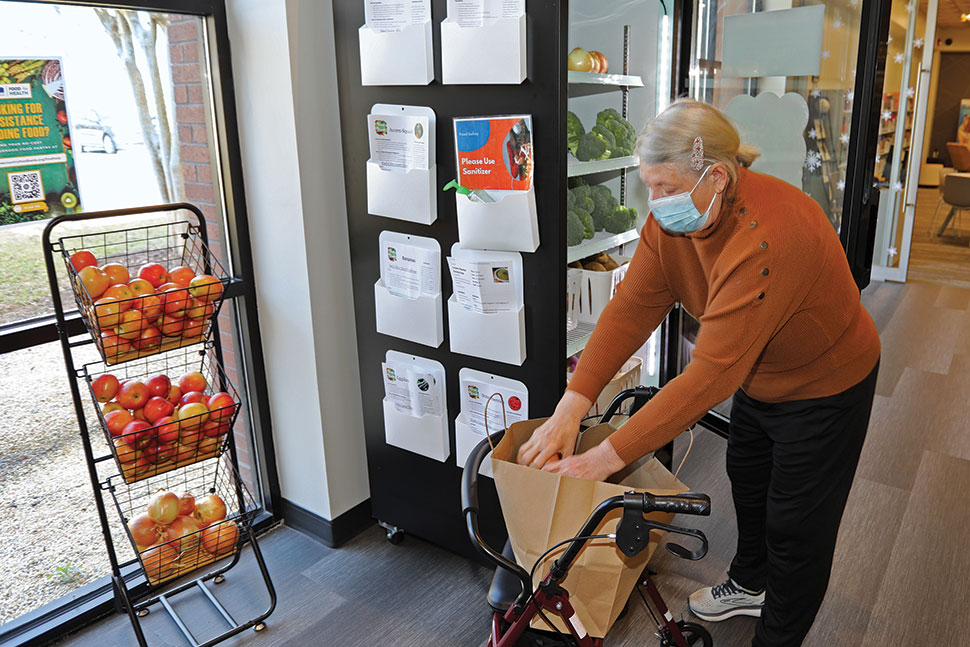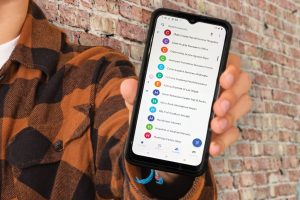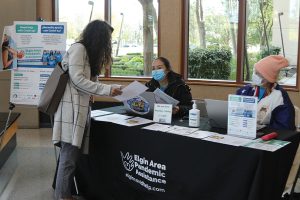
Kathleen Montgomery views food, much like access to information, as a fundamental right.
“We know that if people don’t have enough food, every other need they have is going to seem secondary,” says Montgomery, associate director of community engagement at Charleston County (S.C.) Public Library (CCPL).
The pandemic exacerbated food insecurity throughout the country, with an estimated 3 million more US residents facing food insecurity in 2020 than in 2019, according to data from the nonprofit Feeding America. In 2021, with support from local service organizations, CCPL installed Free and Fresh Fridges within three of its 18 branches. These branches are located in areas with the highest level of need. At any given time, an assortment of potatoes, tomatoes, cucumbers, and other fresh produce is available free of charge.
CCPL is one of several library systems in recent years to install community fridges with the goal of nourishing their neighborhoods and reducing the stigma around food assistance. While dry goods pantries have become somewhat common at many library facilities, community fridges are a more recent trend and enable access to fresh and perishable foods.
As COVID-era expansions of the Supplemental Nutrition Assistance Program, or SNAP, are set to expire at the end of 2023 and likely to raise food insecurity rates, the library could be another resource for communities seeking support.
“Our mission is to strengthen our community by connecting people with the ideas and tools they need to enrich their lives,” says Nikki Hayter, supervising librarian at Des Moines (Iowa) Public Library’s (DMPL) Franklin Avenue branch. “I don’t know what could be much more enriching than food.”
DMPL installed two fridges in 2022: at its South Side branch in October and its Franklin Avenue location in December. Hayter and Alicia Mangin, South Side’s senior librarian, worked alongside food rescue nonprofit Eat Greater Des Moines to apply for grants to fund the project. Each branch received $5,000.
Mangin was inspired to take action after local data indicated that her library’s zip code had one of the highest concentrations of food pantry use in Des Moines from July 2021 to June 2022. Recent inflationary pressures on the price of food and other basic needs also tightened patrons’ grocery budgets, leading Hayter to expand her perspective on what food insecurity can look like.
“There’s this tendency to always think of it as very extreme,” Hayter says, “which it is—if you’re hungry, that’s extreme—but people can transition in and out of food insecurity.”
A Safe Space
The fridge at Poughkeepsie (N.Y.) Public Library District (PPLD) began as a high school class project and is now largely managed by local teens. In spring 2022, three students began collecting donations, first obtaining three fridges and about $2,000, most of which came through GoFundMe. When the three were searching for a location for the first fridge installation, community members suggested PPLD.
“The library’s a place where [people] feel safe, comfortable, and able to be in community with each other,” says Trevor Brooks, 17, one of the student organizers.
The collaboration was an “easy yes,” says T. J. Lamanna, head of community engagement at PPLD. In October 2022, the fridge was installed at PPLD’s Adriance Memorial Library within the city of Poughkeepsie, where an estimated one in four households face food insecurity.
Additionally, Lamanna notes, the fridge requires little staff time. The students continue to oversee the donations and stop in regularly to restock.
Finding Food
To fill the fridges, the libraries receive deliveries from local groups—food assistance nonprofits, churches, farms, and small businesses, for example—as well as donations from individuals, both in the form of food and money to purchase items. While CCPL focuses on fresh fruits and vegetables, DMPL and PPLD accept a variety of food, including dairy products, bread, canned and frozen goods, and prepared meals.
“There could be a teen after school grabbing a snack, an unhoused person that’s grabbing a prepared meal for the day, or maybe a mother has a screaming toddler and there’s a milk carton in there,” Lamanna says. “I’ve seen all these situations happen.”
“We know that if people don’t have enough food, every other need they have is going to seem secondary.—Kathleen Montgomery, associate director of community engagement at Charleston County (S.C.) Public Library
Libraries can also provide guidelines for donations from individuals. For example, PPLD has a sign requesting that items include ingredient and allergen labels and that they not be open or past expiration and best-by dates.
The three library systems do not limit how much people can take from their fridges, noting they do not know users’ household sizes or whom they may be bringing food to.
“It’s really a take-what-you-need model,” Montgomery says. “We find that everyone is following that.”
Tracking Use
Cleaning the fridge and checking for expired items can be done by staff or volunteers. Community fridges housed at nonprofit organizations are also generally protected against liability under the federal Bill Emerson Good Samaritan Food Donation Act.
Documenting how often fridges are used can be challenging for several reasons, one of which is libraries’ obligation to respect patron privacy. Hayter says her DMPL branch leaves out a sheet of paper and asks visitors to draw hashmarks after taking food. They average around 100 withdrawals weekly, knowing it could be an undercount. CCPL’s Montgomery measures use by the weight of food delivered to its branches, which was 50,000 pounds in 2022, but doesn’t include any patron-donated foods.
Lamanna of PPLD does not measure input or output, saying that quantifying the fridge’s success is simple: Food comes in, food goes out.
“I don’t think everything in the library needs to be datafied,” he says. “If you’re going to do community-based work, you have to be willing to let go of that a little bit and accept the will of the community.”
For library workers considering installing a fridge, Hayter and Mangin say it is important to take inventory of local needs and what programs already exist to best determine what role the library should play. Since they installed the fridges, the two say that people on both sides—those who use and those who add to them—have shared their gratitude for DMPL’s efforts.
“Are we going to solve food insecurity in the community? No,” Hayter says. “But what we’ve done so far is instrumental in addressing the need.”


